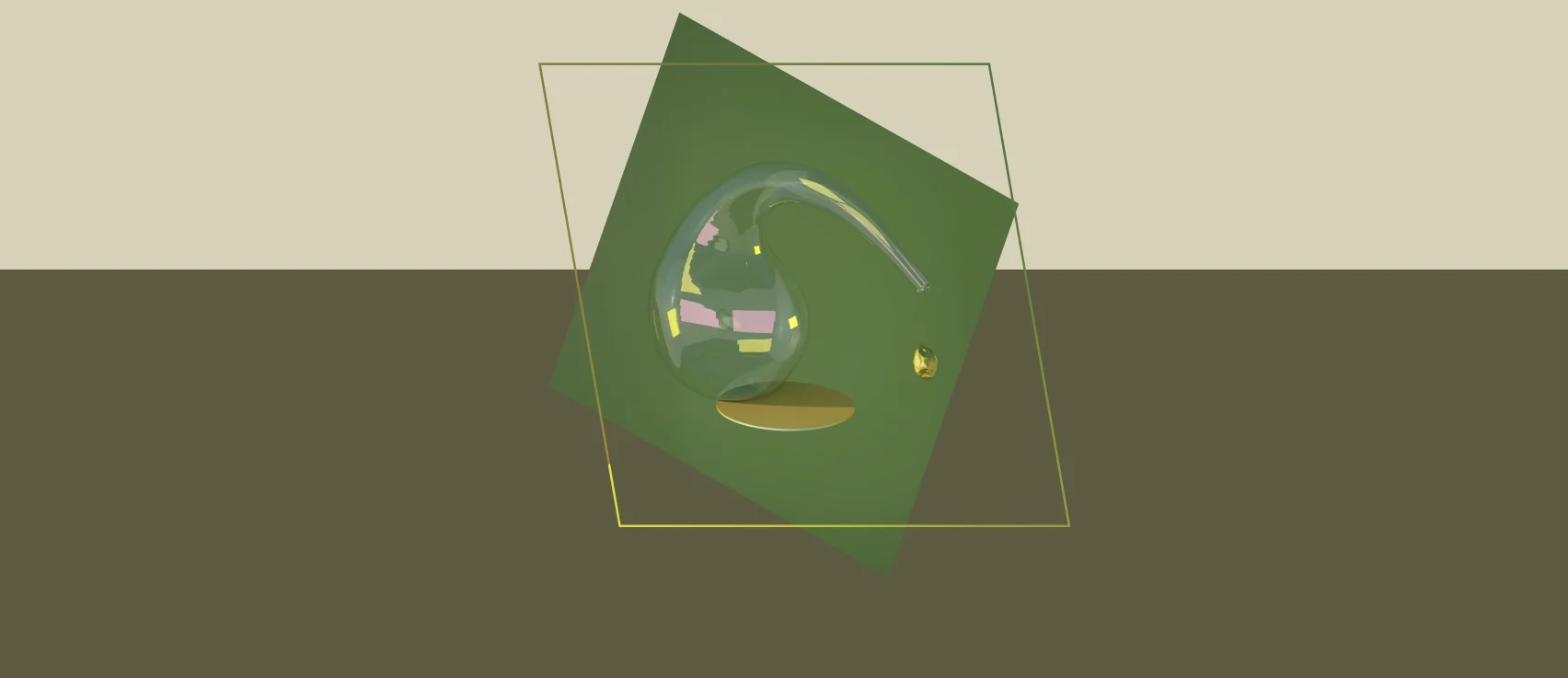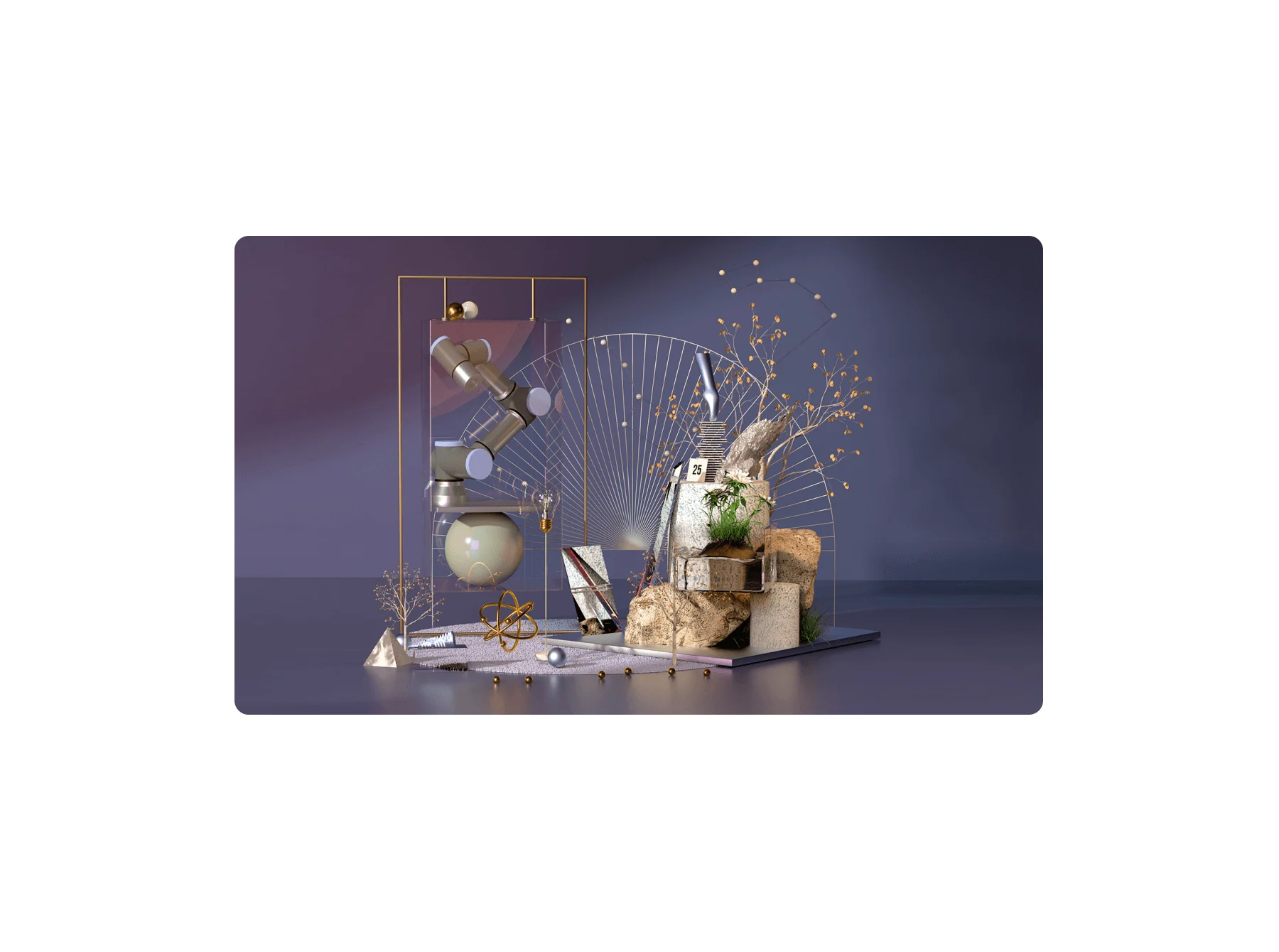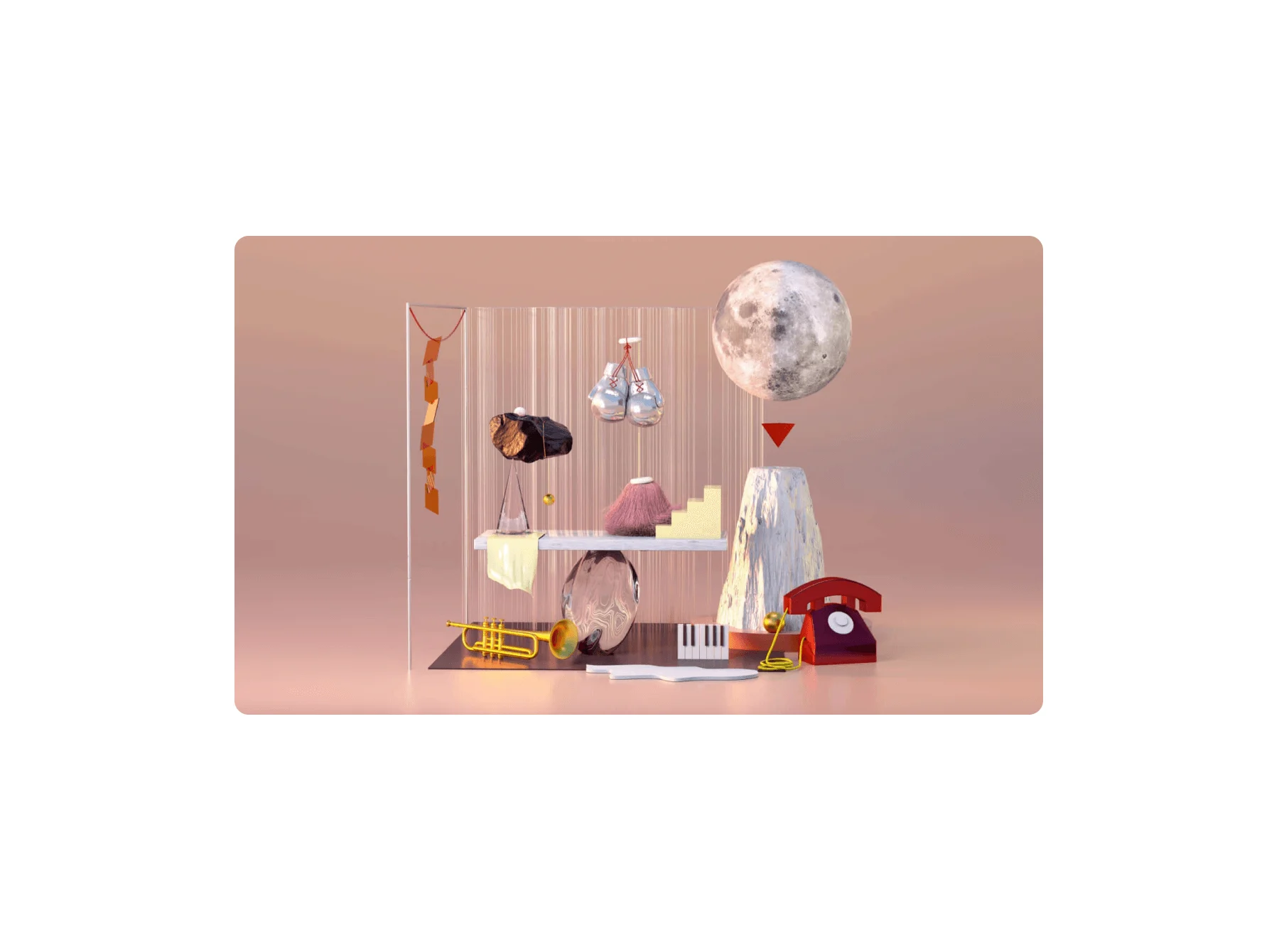


If you’re looking for an artist working at the cutting edge of design and technology, you’ll be hard pressed to find one more fascinating than Lucy McRae. Coining the term “body architect” to describe the work that she creates, Lucy fuses art, design and science in order to imagine new ways that technology can support the body, and evolve our understanding of it. And it’s these principles that Lucy leaned into as part of Kia’s Creativity Drive Hackathon, presenting a number of projects centered around nurturing creativity in future generations. Here, writer Allyssia Alleyne dives into the rules that govern Lucy’s creative process and pioneering work.
3D illustrations by Yuxin Zhou.
Australian body architect and science fiction artist Lucy McRae wants you to see the future differently. Forget the dark and mechanical tropes of the genre: Fusing art, design, and science, her concepts are fleshy, tactile and emotionally-driven. Each one invites the viewer to imagine a world where technology works with, and supports, the body under new cultural and environmental conditions, while drawing attention to what we stand to lose if we allow ourselves to grow ever more submissive to it.
Lucy’s growing list of prototypes include “Solitary Survival Raft”, a machine designed to protect and comfort a lone traveler adrift in the unknown; “Biometric Mirror”, an installation that questioned the pitfalls of allowing artificial intelligence to assess facial attractiveness; “Heavy Duty Love”, a mylar membrane that inflates and contracts around the body to mimic the feeling of an embrace; and “Swallowable Parfum”, a cosmetic pill that bio-hacks the user’s immune system. Over the last decade, her work has featured in exhibitions around the world, she has directed stylish, thought-provoking films, and, in the case of one fluid-filled dress made of 1.2 kilometers of plastic tubing, a Robyn music video.
A former ballet dancer and competitive hurdler, Lucy McRae’s practice draws from a lifelong interest in science and the body. But while all of her concepts are grounded in real innovation, she’s guided by intuition above all else. “My body is like a barometer picking up on signals at the edges of culture, so there’s an element that’s outside of my control,” she explains.
Creativity for me is exploring the unknown, untrodden paths.
As part of the Kia Creativity Drive Hackathon, Lucy and her team, which included a Kia exterior designer, the founder of forward-thinking school Halcyon in London, and a UX expert, came up with a pitch that expands the locus of creativity to include both the interior self and the world around us: Their “Seed” initiative suggested a year-long project that sees students and teachers collaborating on a variety of interdisciplinary projects – ranging from dance and theater-making to science experiments.
“The Kia Creativity Drive Hackathon, for me, is about unpacking education as it is now, seeing how concretized it is and lacking in innovation and spirit, and looking towards the future,” she says. “The diversity was an opportunity to have some texture and friction, which paid off.”
Breaking down her process, Lucy explains how she harnesses intuition, science and movement in her creative practice.

Don’t underestimate the connection between body and mind
Before she turned her focus to art and design, Lucy was an athlete. She remembers a childhood spent pushing her body to its physical limits – 14 years in the studio training in classical ballet and endless hours at the track, where she competed in the 100-meter hurdles. “Movement is ingrained in me. My body has a memory of exploring the edges, whether it’s speed or choreography,” she says.
These experiences triggered the fascination with the body and its potential that has largely defined her career. But they also cemented an awareness of the relationship between mind and matter, and between creativity and activity. “I find that thoughts are physical sensations, and physical sensations are thoughts. They are inseparable,” she says. “We get one body, and the way that we tune it, and move it, and care for it ultimately decides how we see, and are, and think, and act in the world.”

Lean into uncertainty
As a visiting professor at the Southern California Institute of Architecture: SCI-Arc, Lucy knows that her pedagogy is unconventional: Rather than focusing on teaching the right and wrong way to approach a task, her primary goal is to foster an appreciation for intuition and “cultivate an affinity for working from places of doubt, vulnerability or uncertainty.”
“Through filmmaking and prop-making, we use the unknown as a process, and trust that the magic of alchemy and the transformation of materials will get us somewhere,” she says. “I have had a lot of pushback from students because it’s not the normal way of approaching education or architecture.”
This approach stems from Lucy’s fundamental view of the creator as explorer, which means a degree of fearlessness is key. “It’s not like getting in a car and going to the beach. for me, is exploring the unknown, untrodden paths,” she says. “If you know exactly where you’re going, or what you’re making, then you’re not going to create anything new or pioneering.”

Rally behind a shared vision
Going into the Kia Creativity Drive Hackathon, Lucy was excited to collaborate with minds who shared her passion for creativity and education: “As someone who likes to disrupt markets, it felt like a natural habitat for me to be involved in,” she says. “I’m also known for and like being a wildcard in these environments.”
Whatever the project, she believes different characters, energies and experiences should be given equal seating at the table; disagreement and friction should be encouraged rather than feared. But when it comes to values around risk and innovation, consensus is essential to ensure the best result.
“It’s really important in the beginning that there’s a shared vision, that we all want to go beyond what already exists and, through risk, we innovate on a particular theme or topic,” she explains. “If there’s any kind of misalignment there, then that’s a good clue that there’ll be misalignment down the path.”

Find your grounding in science rather than fiction
For a self-professed sci-fi artist, it comes as a surprise when Lucy admits she finds little inspiration in the genre. “My earliest, most memorable sci-fi experience was Gattaca and that left lasting impressions,” she says. “But I was more interested in science than science fiction.”
She points back to the four years she spent working at electronics brand Philips’ Far-Future Design Research Lab, developing concepts that included an electronic tattoo and illuminated dresses that change color to reflect the wearer’s emotional state.
I have in the past likened the creative process to the way elite Olympic athletes train.
“That was when I started looking at technology through an artistic lens, but it was never fantasy; they were all potential technologies that Philips had patents for,” she says. “For me, it’s really important that whatever I’m making is grounded in science or emerging science, and speculating on how that might evolve or change.”

Make the most of the materials around you
In 2007, Lucy began working with Dutch designer Bart Hess on a series of garments that reimagined the human silhouette, rooted in a shared interest in genetic manipulation and future beauty. Working under the moniker LucyandBart, they photographed themselves in DIY costumes covered with quills, spikes and grass, or else deformed by bubbles and foam.
While the execution was slick, the costumes themselves were not: The duo used everyday materials like Q-tips, balloons and pantyhose to bring their concept to life, reflecting a high-concept, low-tech hybridity Lucy exercises to this day. Heavy Duty Love, her commission for this year’s Venice Biennale, for example, was sewn from carpet underlays, tarpaulins and other camping materials in her LA home.
Working with common materials not only gets around issues of cost and access, but also enables her to pursue projects with the urgency she thinks they deserve. “I think if you wait until all the planets align and you have everything that you need, you’re going to be waiting for a very, very long time.”

Factor rest and reflection into your creative process
Many of Lucy’s artworks look at how we might use technology to protect the elements that make us human – not only our bodies, but also our psychological needs and capacity for resilience. Similarly, she preaches a holistic approach to creative production centered on care and longevity: “I have in the past likened the creative process to the way elite Olympic athletes train: There’s a warm up, a cool down, a competition and a recovery,” she says.
For Lucy, that recovery period can be hardest to commit to; after completing a major project, she typically feels as inspired as she does exhausted and anxious. But she considers those moments critical to growth.
“That time of recovery is really good to reflect upon what part of the creative process worked and what didn’t, and that allows you to adapt and mutate and reinvent your pipeline moving forward,” she says. “ also allows for the beauty of detachment and for serendipity to take place – something you didn’t necessarily program can come in and set you on a whole new tangent.”
Both Kia and WePresent share the belief that creativity is a defining characteristic of humankind. It’s one that should be fostered in future generations; but instead of nurturing creativity in children, our education systems often repress it. This is why Kia devised Creativity Drive: a hackathon that challenged creatives to dream up projects to help equip the next generation with the creative thinking needed for the future. The outcome of the hackathon was the simple yet brilliant insight that the foundation of creativity lies in asking questions, not in having all the right answers.





